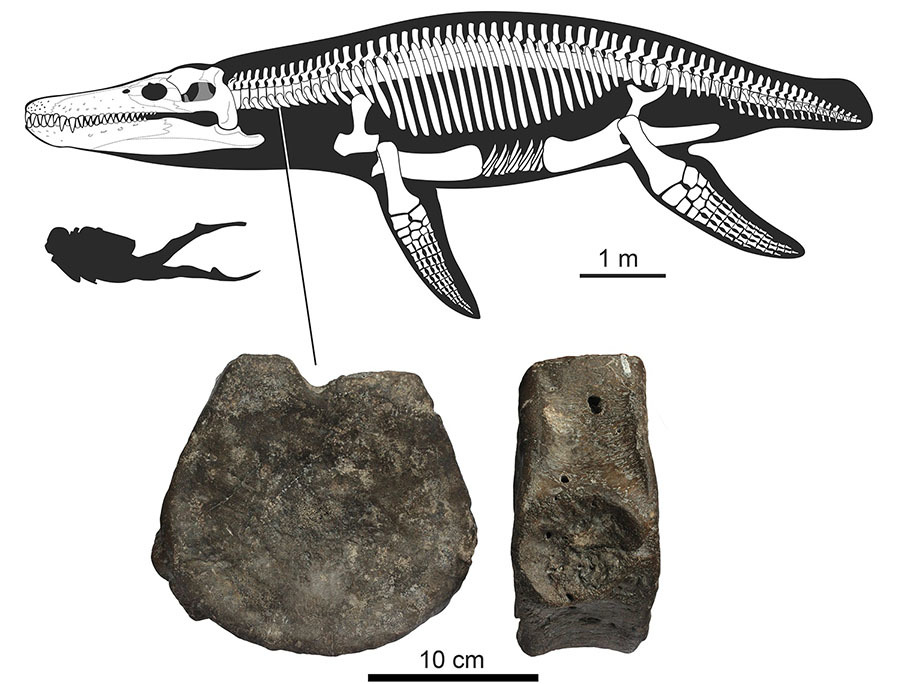Researchers from the Borisyak Paleontological Institute of the Russian Academy of Sciences found that the largest reptiles, the Pliosaurs, inhabited the territory of the modern Volga region at the beginning of the late Cretaceous. This was reported in the journal Cretaceous Research.
Scientists came to this conclusion after studying the cervical vertebra of a fossil animal discovered in the area of the village of Nizhnyaya Bannovka in the Saratov region. Its diameter is 19 cm.
According to experts, it belonged to the Cretaceous marine predator - the giant pliosaurus of the subfamily Brachaucheninae. These largest reptiles of their time occupied the top of the food pyramid in the aquatic ecosystem, fed on fish and other animals.
- Reconstruction of the Pliosaurus
- © Paleontological Institute. A. A. Borisyak RAS
Previously, cervical vertebrae of such a large size were known only in three pliosaurs: Kronosaurus queenslandicus from Australia, as well as Kronosaurus boyacensis and Sachicasaurus vitae from Colombia. Moreover, they all belong to the early (lower) Cretaceous period of the Mesozoic era (145-100.5 million years ago), due to which it was believed that large pliosaurs disappeared in later periods.
However, the find of domestic scientists refutes such ideas. According to them, large pliosaurs were able to live longer: the found vertebra belongs to the late (lower) Cretaceous period (100.5–93.9 million years ago). From which scientists concluded that the individual to which he belonged lived later than all the previously known giant representatives of this group of extinct reptiles.
“Perhaps their disappearance is somehow connected with the extinction of ichthyosaurs at the end of the Cenomanian century, but to make clear conclusions, more finds from this time interval are needed,” the press service of the Paleontological Institute told RT.

